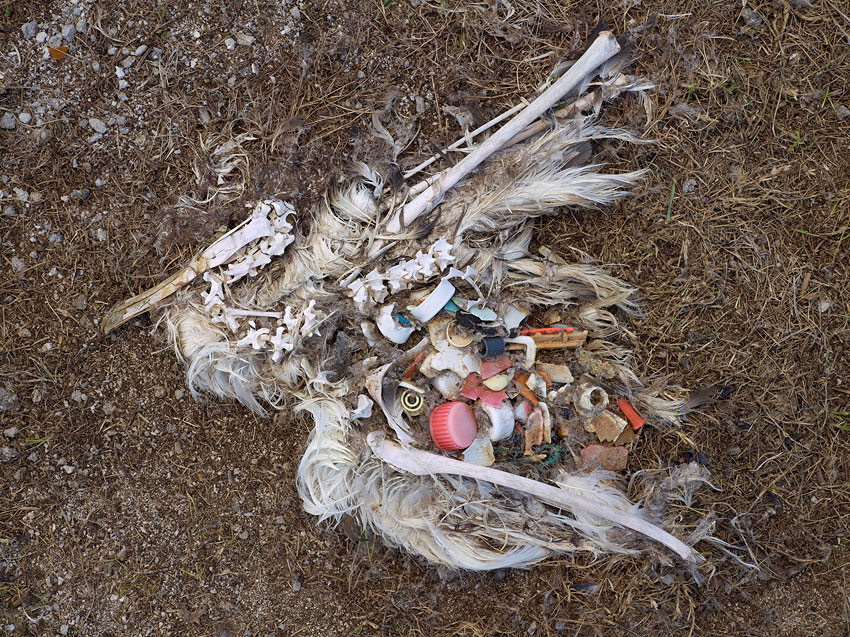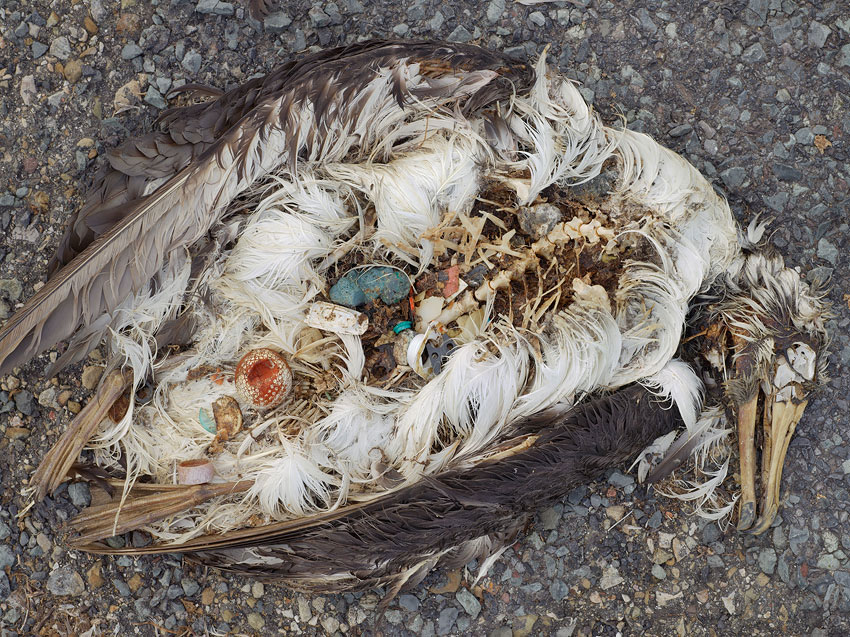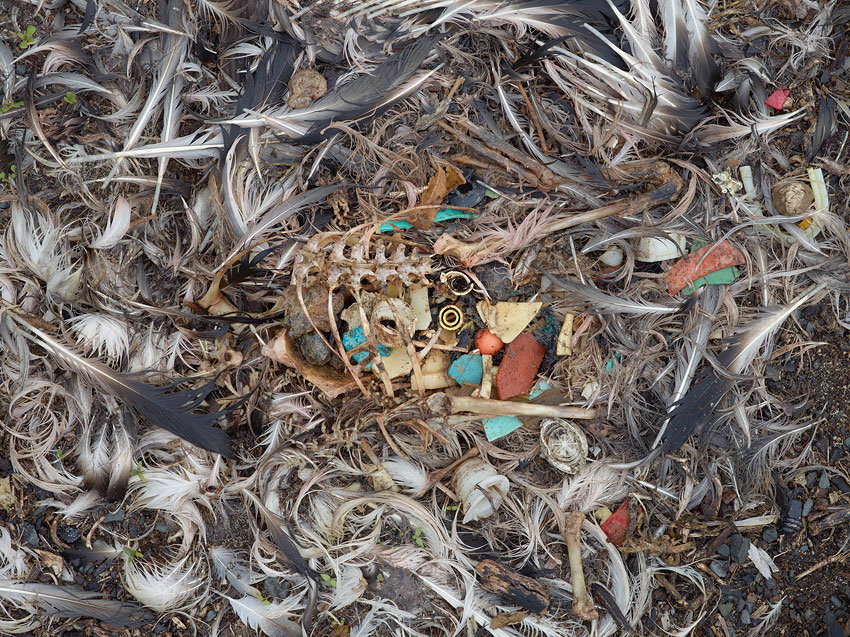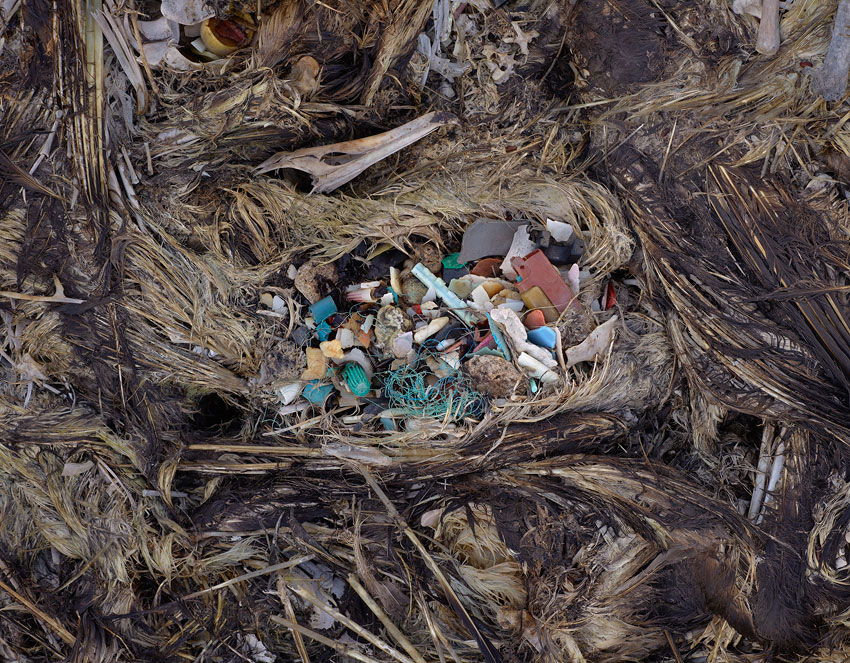Ethics, Excess, Extinction
Section Two: EXCESS
We live in a consumer society in which the buying and selling of goods and services is an important social and economic activity. In the past, we’ve paid little heed to where the things we buy come from — and where they end up.
But that’s changing alongside the recognition that our consuming habits are reducing the planet’s ability to process waste and generate enough soil, timber, minerals, potable water and other resources needed to satisfy a demanding planet.
One big problem is that so much of the “stuff” we create to satisfy those demands is wasted. For example, in the United States, about 40% of all food goes to waste, including the more than 56 billion farmed animals killed every year that end up in our refrigerators. And animal products are significantly more resource intensive than produce, requiring more energy, water, and other “inputs.”
Meanwhile, the fashion industry champions fur coats, snakeskin boots and crocodile bags – and creates revenue in the billions – from luxury brands. Many have become targets for animal rights activists, who condemn the use of living creatures to feed our vanity. Some of these are rare or endangered species. The lack of transparency in supply chains can make it impossible to know the provenance of many of these goods.
It’s not that humans should necessarily do without these things. The question is how much consideration goes into what we buy, eat and wear, including the ethical treatment of species, endangered and otherwise. An unsustainable piece of clothing, however luxurious and seemingly perfect, may be anything but flawless. How much do we think about these things? Can luxury and sustainability live side-by-side reinventing our experience and creating a new norm?
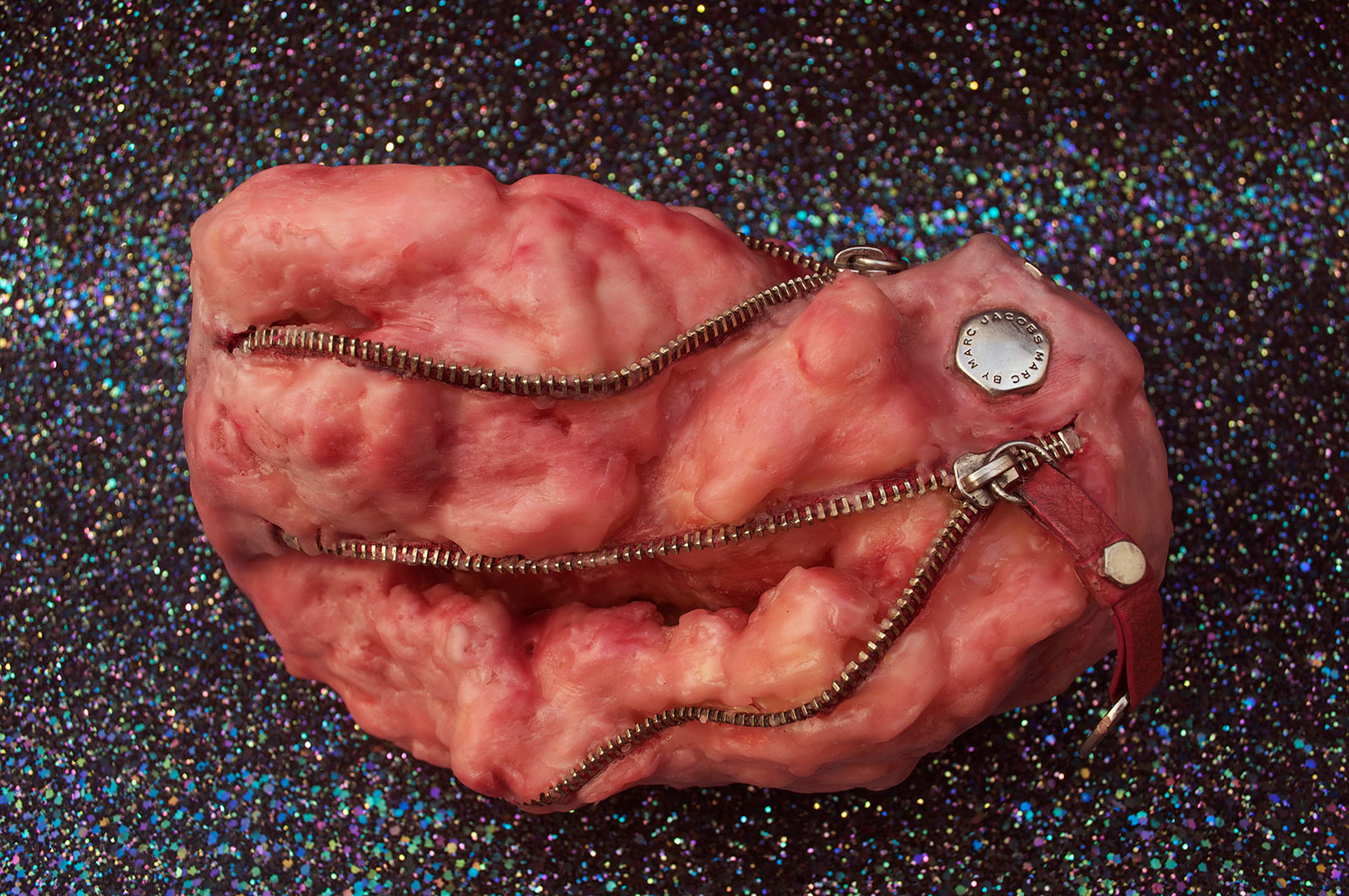
Burdens of Excess
Andrea Hasler, 2013, deconstructed Marc Jacobs handbag, wax, 6.5″ x 7.5″ x 8.5″, © 2013, courtesy of the artist
Hasler’s poignant and political sculptures are characterized by a tension between attraction and repulsion. Burdens of Excess is a play on the dichotomy that lies at the heart of a consumer society: The warped wax handbag is familiar in its bodily, organ-like structure, but thrown out of context with its sparkling adornments. In the same way, the goods that buyers consume can be deceiving as to their origins and can become a comfortable part of everyday life. Upon closer inspection, these same goods are sometimes repugnant in their manufacturing, environmental cost, and lack of sustainable and cruelty-free practices.
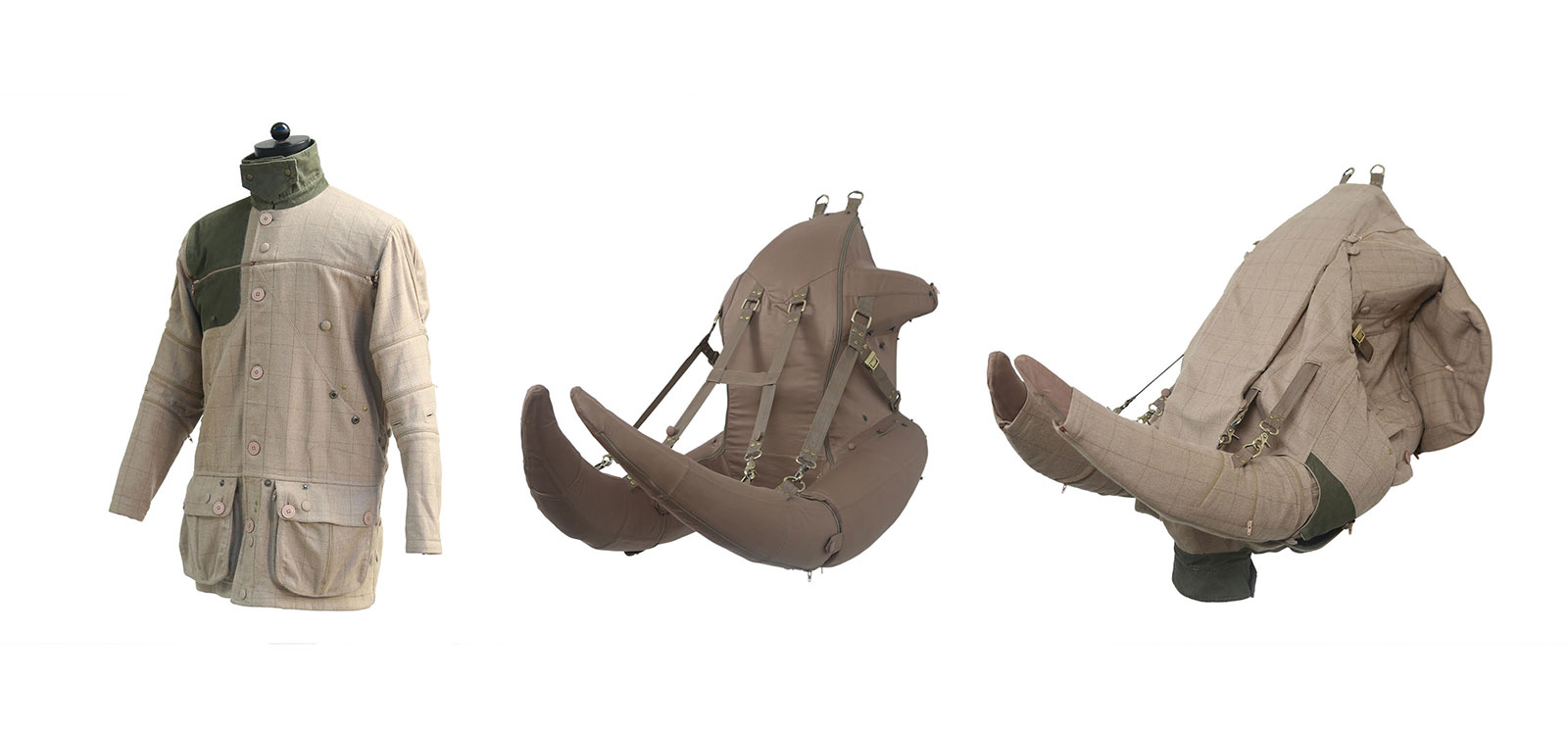
Embodying Ethics, Asian Elephant
Rohan Chhabra, 2014, safari jacket, 30″ x 48″ x 28″ © 2014, courtesy of the artist
By designing a series of hunting jackets that turn into representations of the animal being hunted, Chhabra seeks to emphasize our complicity in the problem—the act of slaying a living creature and transforming it into an object, decorative accessory or trophy. Rather than condemning the hunter outright, the work helps us recognize the hunter in ourselves, thereby moving from the aesthetics of the artworks to moral reflection.
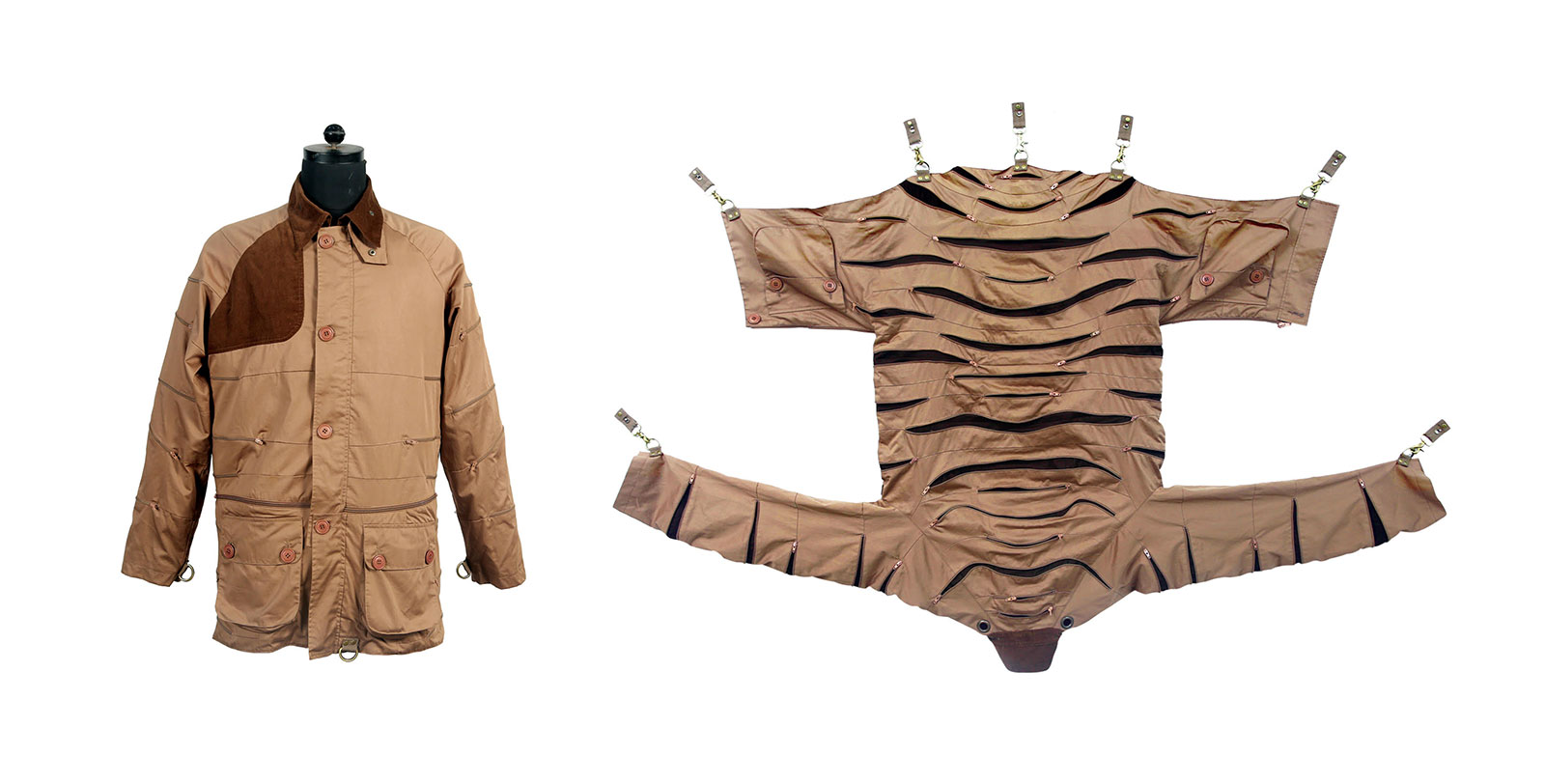
Embodying Ethics, Tiger
Rohan Chhabra, 2014, safari jacket, 30″ x 48″ x 28″ © 2014, courtesy of the artist
Encants. The Art of Seduction
Antonio Briceño and Sara Bernal, 2015, 4-screen video projection with sound, 14′ x 14′ x 14′ © 2015, courtesy of the artists
In this mock-documentary, the behaviors of the Bowerbirds and videos taken from the second-hand flea market Els Encants in Spain, are shown side by side.
Bowerbirds, sometimes like us, dedicate their lives to the art of collecting different objects in order to organize and display them before the eyes of those whose attention they wish to catch. Each bowerbird depends on his aptitude when collecting the things that are most attractive to him, and his good taste when he exhibits them with a personal touch.
The videos allow us to compare and reflect on our impulse to consume. The objects become an extension of our personality, specifically to attract others.
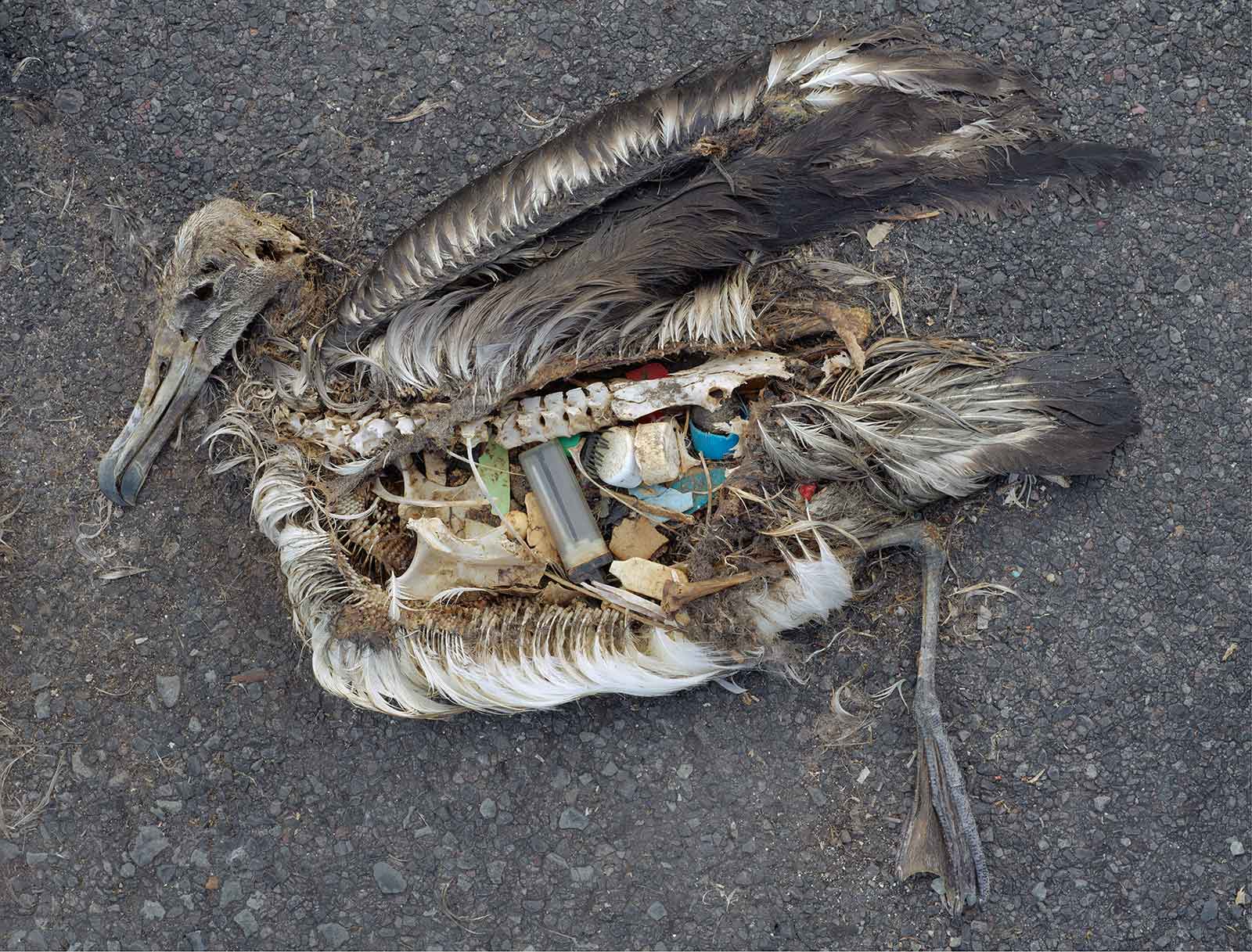
CF000313: Unaltered stomach contents of a Laysan albatross fledgling, Midway Island, 2009
Chris Jordan, 2009, archival inkjet print, 26″ x 32″, © 2009, courtesy of the artist
On Midway Atoll, a remote cluster of islands more than 2,000 miles from the nearest continent, the detritus of our mass consumption surfaces in an astonishing place: inside the stomachs of thousands of dead baby albatrosses. The nesting chicks are unwittingly fed lethal quantities of plastic by their parents, who mistake the floating trash for food as they forage over the Pacific Ocean.
Midway: Message from the Gyre
Chris Jordan, 2011, 4 photographs, 26″ x 31″, © 2009-2017, courtesy of the artist
The Meatrix video series
Free Range Graphics, 2003-2013, videos
This viral video broke new ground in online grassroots advocacy when it was released, creating a unique vehicle by which to educate, entertain, and motivate viewers on animal welfare. Spoofing the movie, The Matrix, this video series, was created to educate viewers about factory farming and offer solutions to support sustainable food and agriculture.
The videos have been translated into more than 30 languages and are one of the most successful online advocacy campaigns ever, with well over 30 million views.


